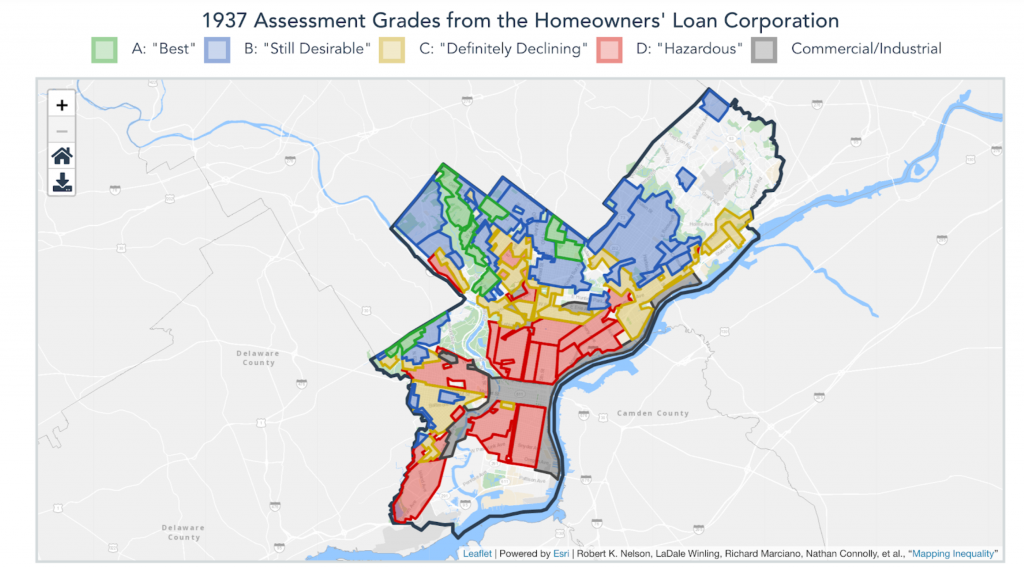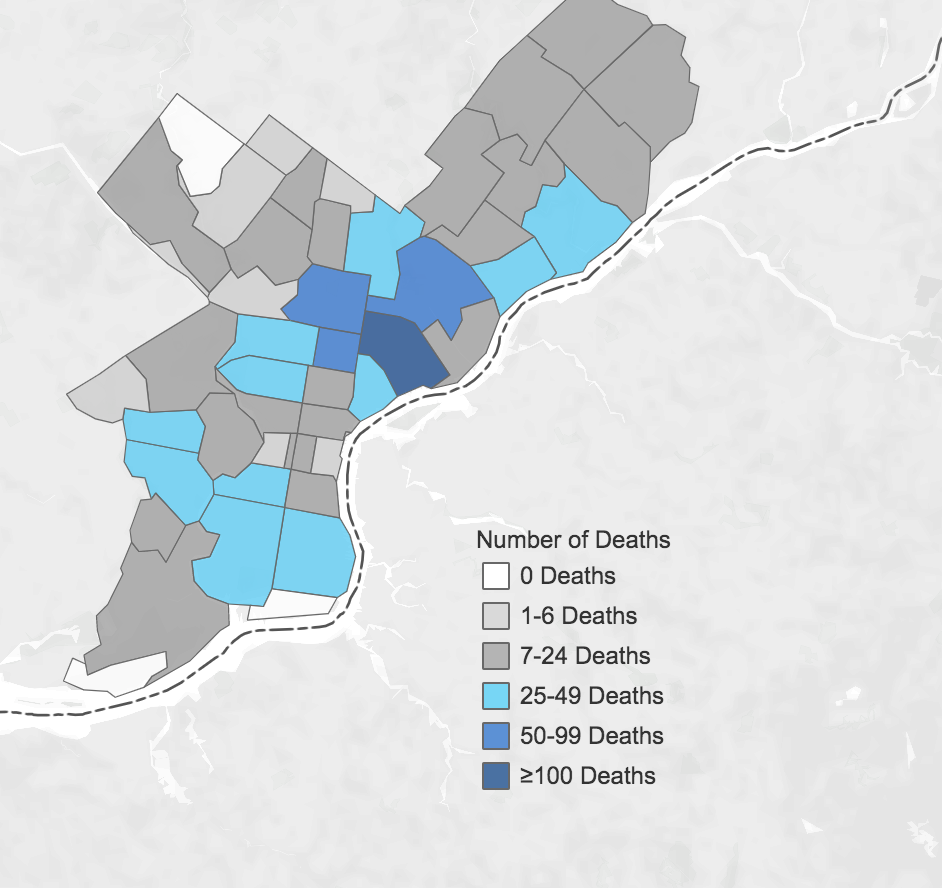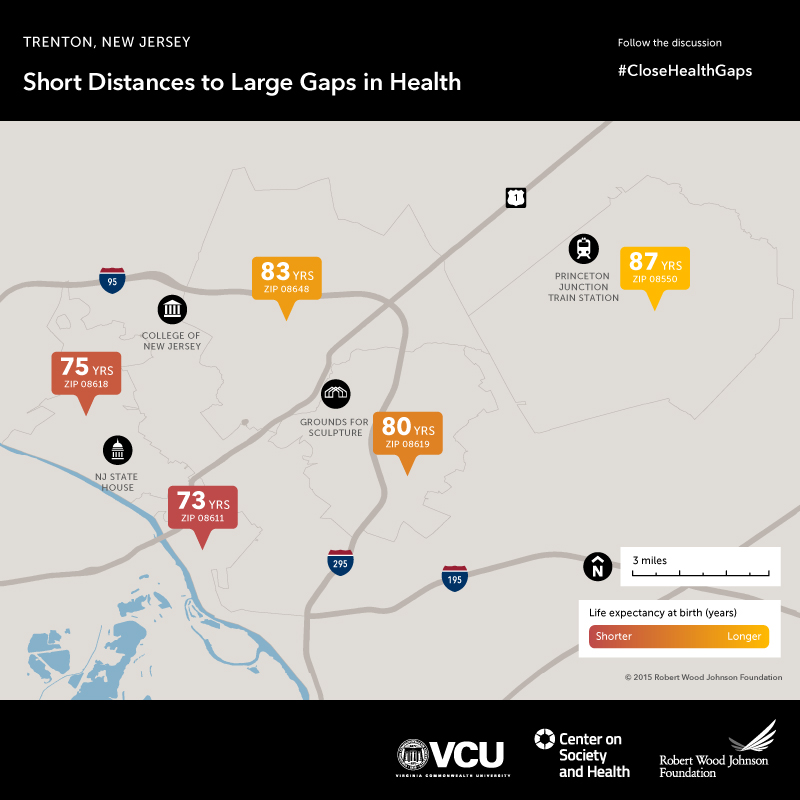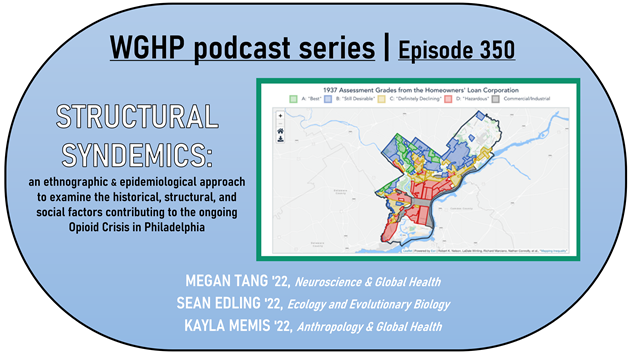
Residents of a homeless encampment in Kensington, Philadelphia. (Kimberly Paynter/WHYY)
The opioid epidemic is one of the most significant public health crises affecting the United States today, with regions of Philadelphia, Pennsylvania like Kensington and Fishtown considered some of the most severe epicenters in the country. Our project aims to combine an ethnographic and epidemiological approach to examine the historical, structural, and social factors that contribute to the ongoing Opioid Crisis in Philadelphia. In this podcast, some questions we aim to address are: How did the opioid crisis begin and develop in the City of Brotherly Love? Who and where does it primarily affect? And what structural factors have contributed to their experiences with opioids and seeking related health resources? We invited guest speakers Clayton Ruley from Prevention Point Philadelphia and Dr. Bon Ku from the Thomas Jefferson University Hospital to speak on their experiences working directly with these health topics in Philadelphia. This project will also touch on the epidemic’s links to other public health crises in the United States, such as the HIV/AIDS epidemic and the broad social inequities (i.e. segregation, police brutality, and mass incarceration) that contribute to the rise of such syndemics. Finally, the project examines the impact of the COVID-19 pandemic on the opioid crisis, and we look towards the future of the opioid epidemic as the field of healthcare rapidly transforms today.
Presented by the WGHP podcast team: Sean Edling, Kayla Memis, & Megan Tang.
Click the image above, or the link here, to listen to Episode 350 on the Opioid Crisis in Philadelphia.
Supplemental figures

Redlining map of Philadelphia by the 1937 Home Owners Loan Corporation.

Opioid Death Distribution by Zipcode in Philadelphia (2019)

A map depicting the life expectancies in various zip codes across the city of Philadelphia, from research by RWJF & VCU in 2016.

Supplemental map from the same study as above now showcasing data from the Princeton area. This map is included to provide context to our audience members who may be more familiar with Princeton than Philadelphia, and also to serve as a point of comparison.
If neither the image or text hyperlinks above are working, our podcast is included here as well for convenience.
Thank you for listening!
Bibliography
BOP Statistics: Inmate Offenses. (2020, November 28). Federal Bureau of Prisons. https://www.bop.gov/about/statistics/statistics_inmate_offenses.jsp.
Cunningham, C. (2018). Opioids and HIV Infection: From Pain Management to Addiction Treatment. Topics in Antiviral Medicine, 25(4), 143–146.
DJ Jazzy Jeff. (2015, October 12). The Fresh Prince of Bel-Air. YouTube. https://www.youtube.com/watch?v=62EjFgPECgo.
Ebram, T. (2019). “Can’t Jail the Revolution”: Policing, Protest, and the MOVE Organization in Philadelphia’s Carceral Landscape. The Pennsylvania Magazine of History and Biography, 143(3), 333-362. doi:10.5215/pennmaghistbio.143.3.0333
Edling, S., & Ku, B. (2020, December 4). Dr. Ku Interview. personal.
Effects of COVID-19 on the Opioid Crisis: Francis Collins with Nora Volkow. (2020, July 6). National Institute on Drug Abuse. https://www.drugabuse.gov/videos/effects-covid-19-opioid-crisis-francis-collins-nora-volkow.
Ferrell, A. (2019). “Righting Past Wrongs”: Rhetorical Disidentification and Historical Reference in Response to Philadelphia’s Opioid Epidemic. Rhetoric and Public Affairs, 22(4), 533-568. doi:10.14321/rhetpublaffa.22.4.0533
Front Matter. (2017). The Pennsylvania Magazine of History and Biography, 141(3). doi:10.5215/pennmaghistbio.141.3.fm
Ghosh A. (2020). Prisoners with drug use disorders during covid-19 pandemic: Caught between a rock and a hard place. Asian Journal of Psychiatry, 54, 102332. https://doi.org/10.1016/j.ajp.2020.102332
Issue brief: Reports of increases in opioid- and other drug-related overdose and other concerns during COVID pandemic. (2020, October 31). American Medical Association. https://www.ama-assn.org/system/files/2020-11/issue-brief-increases-in-opioid-related-overdose.pdf.
Lubrano, A. (2018, December). New Census figures on Philly neighborhoods show inequality, high numbers of whites living in poverty. Philadelphia Media Network. https://whyy.org/articles/new-census-figures-on-philly-neighborhoods-show-inequality-high-numbers-of-whites-living-in-poverty/
Mukherjee, T. I., & El-Bassel, N. (2020). The perfect storm: COVID-19, mass incarceration and the opioid epidemic. The International Journal on Drug Policy, 83, 102819. https://doi.org/10.1016/j.drugpo.2020.102819
Newall, M. (2020, April 9). Kensington: Where the opioid crisis meets COVID-19. The WHYY. other. https://whyy.org/episodes/where-the-opioid-crisis-meets-the-covid-19-pandemic/.
Perlman, D., & Jordan, A. (2018). The Syndemic of Opioid Misuse, Overdose, HCV, and HIV: Structural-Level Causes and Interventions. Current HIV/AIDS Reports, 15, 96–112. https://doi.org/https://doi.org/10.1007/s11904-018-0390-3
Philadelphia Substance Use Data (2019). Substance Abuse Philadelphia. https://www.substanceusephilly.com/
Rhynhart, R. (2020, January). Mapping the Legacy of Structural Racism in Philadelphia. Office of the Controller, City of Philadelphia. https://controller.phila.gov/philadelphia-audits/mapping-the-legacy-of-structural-racism-in-philadelphia/
Rosenblum, D. (2013). Urban segregation and the US heroin market: A quantitative model of anthropological hypotheses from an inner-city drug market. International Journal of Drug Policy, 25(3) 543-555.
Singer, M., Bulled, N., Ostrach, B., & Mendenhall, E. (2017). Syndemics and the biosocial conception of health. The Lancet, 389(10072), 941–950. https://doi.org/https://doi.org/10.1016/S0140-6736(17)30003-X
Stigma Related to Substance Use Disorders. (2020, January 2). American Addiction Centers. https://americanaddictioncenters.org/harm-reduction/stigma-of-addiction
Tang, M., & Ruley, C. (2020, November 13). Prevention Point Interview. personal.
Tully, T. (2020, November 9). 2,258 N.J. Prisoners Will Be Released in a Single Day. The New York Times. https://www.nytimes.com/2020/11/04/nyregion/nj-prisoner-release-covid.html.
Underwood Beats. (2020, November 30). [FREE] Lofi Type Beat “Nostalgia” | Sad Chill Piano Type Beat. YouTube. https://www.youtube.com/watch?v=VdYlUQw-Y-c.
Volkow, N. (2019, October 29). Addressing the Socioeconomic Complexities of Addiction – Lessons from the Kensington Neighborhood in Philadelphia. National Institute on Drug Abuse. https://www.drugabuse.gov/about-nida/noras-blog/2019/10/addressing-socioeconomic-complexities-addiction-lessons-kensington-neighborhood-in-philadelphia
Volkow, N. (2020, July 28). Research at the Intersection of HIV with Substance Use Disorders amidst the COVID-19 Pandemic. National Institute on Drug Abuse. https://www.drugabuse.gov/about-nida/noras-blog/2020/07/research-intersection-hiv-substance-use-disorders-amidst-covid-19-pandemic.
Volkow, N. (2020, September 14). Addressing the Unique Challenges of COVID-19 for People in Recovery. National Institute on Drug Abuse. https://www.drugabuse.gov/about-nida/noras-blog/2020/09/addressing-unique-challenges-covid-19-people-in-recovery.
Wolfram, J. (2019, June 26). Renewing emergency response to opioid crisis, Philadelphia cites progress addressing homelessness, addiction. WHYY. https://whyy.org/articles/renewing-emergency-response-to-opioid-crisis-philadelphia-cites-progress-addressing-homelessness-addiction/
